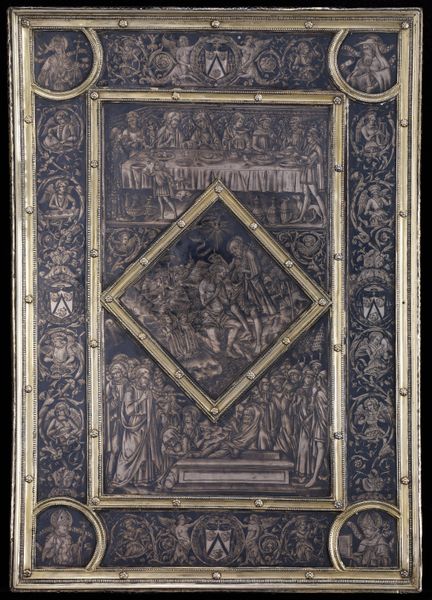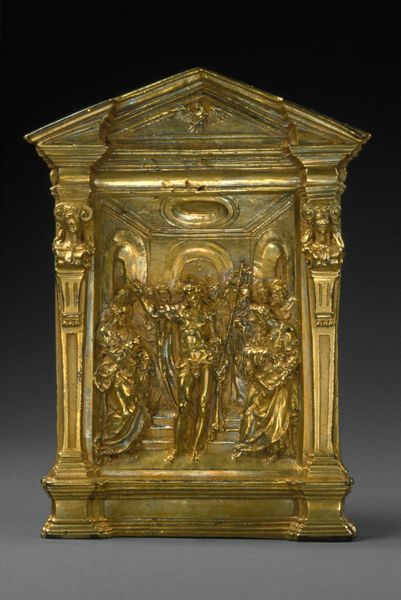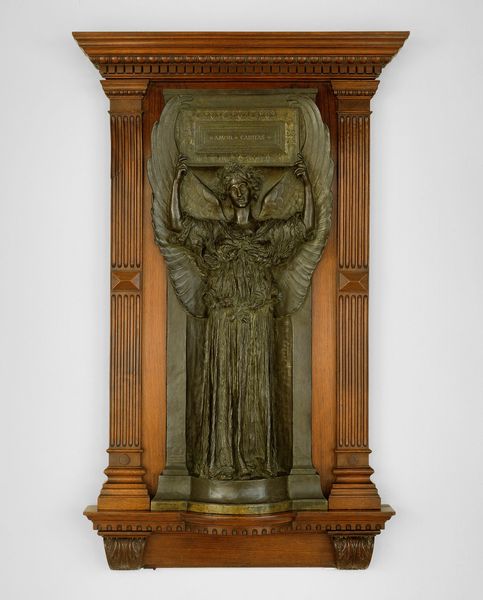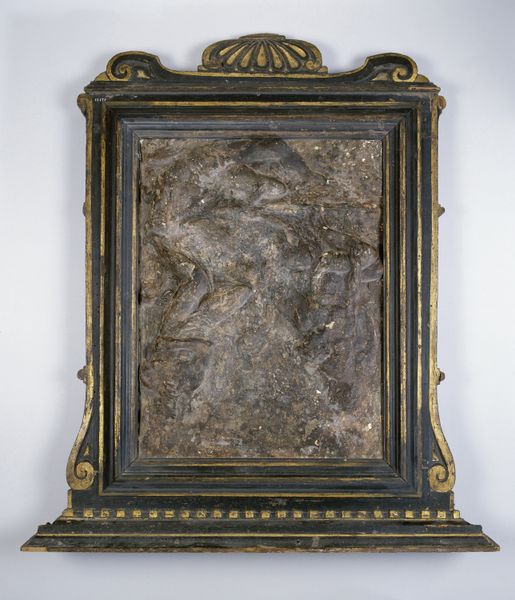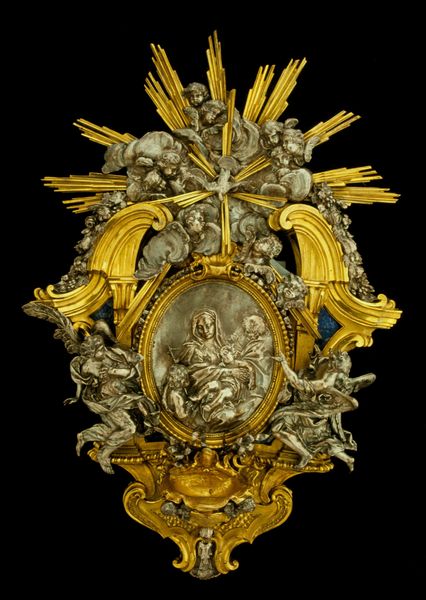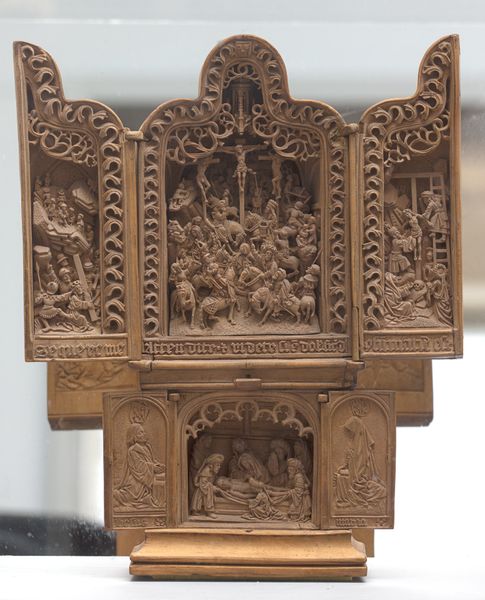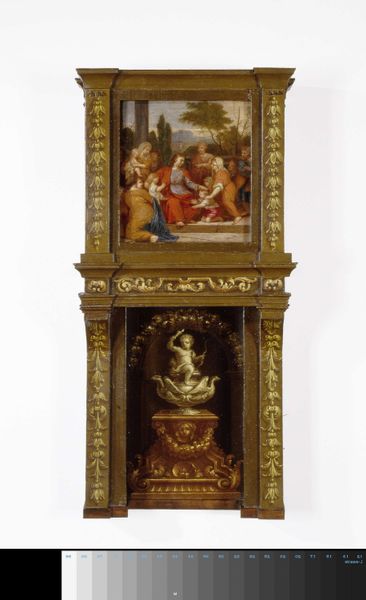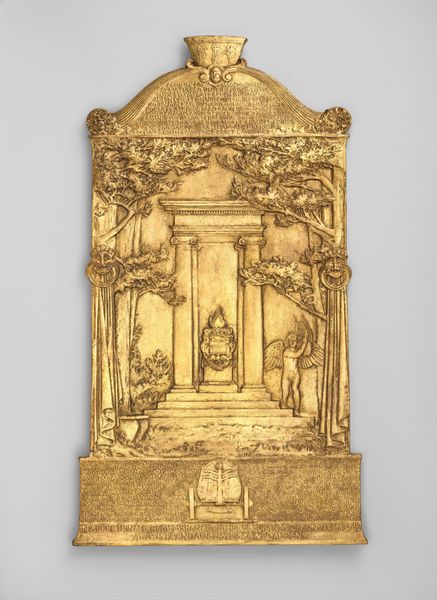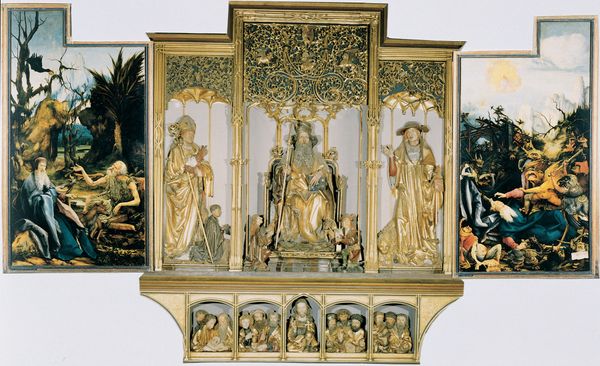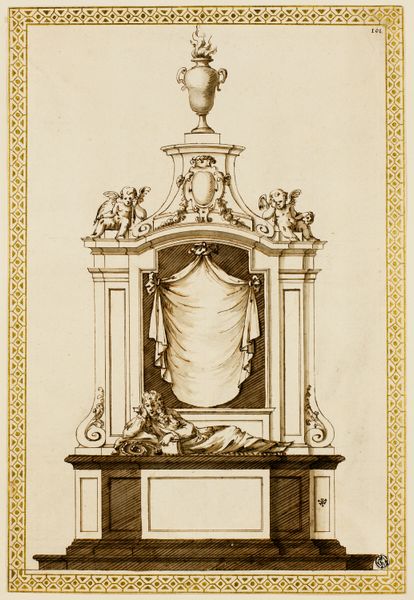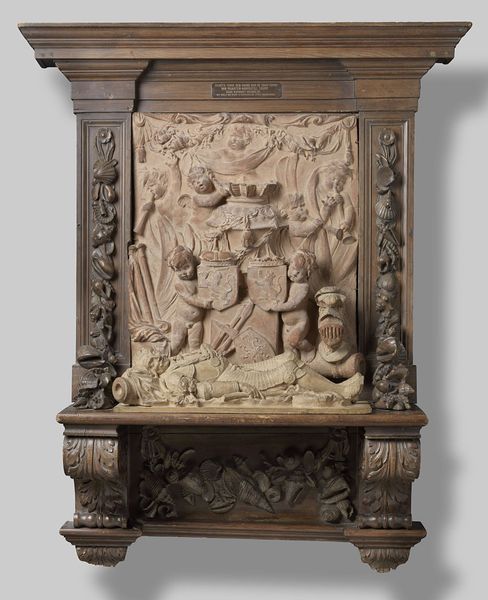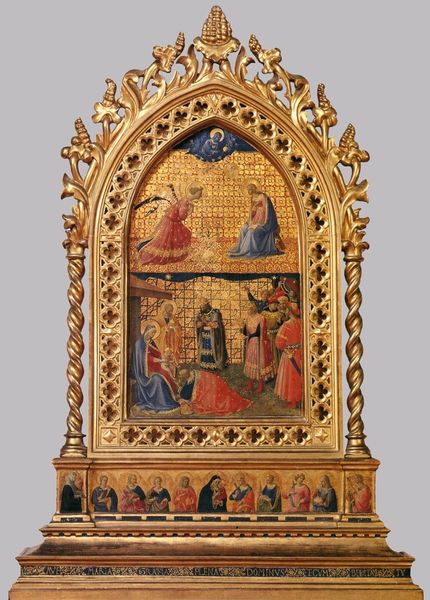
carving, metal, relief, bronze, sculpture
#
carving
#
metal
#
sculpture
#
relief
#
bronze
#
carved into stone
#
sculpture
#
history-painting
#
italian-renaissance
Dimensions: overall (with gold frame and wood backing): 19.37 × 12.07 × 3.18 cm (7 5/8 × 4 3/4 × 1 1/4 in.)
Copyright: National Gallery of Art: CC0 1.0
Editor: Here we have Maso Finiguerra's bronze Pax with the Crucifixion between Two Thieves from around 1460. It's striking how the dark, detailed carving contrasts with the ornate gold frame. What stands out to you when you look at this work? Curator: The composition is particularly intriguing. The artist has clearly delineated separate spatial registers within a singular pictorial field. Observe the densely populated foreground, filled with figures exhibiting pronounced emotional responses, and then note the elevated plane occupied by the central crucifixion scene. Editor: So it's deliberately compartmentalized. What does that accomplish? Curator: Precisely. The effect creates a hierarchical structure and emphasizes the performative grief in contrast to the divine suffering, separated yet linked. How does the framing influence your reading of the artwork? Editor: It makes it feel both precious and staged, almost like a miniature drama unfolding before us. The gold emphasizes certain figures more. Curator: Yes, the artist is clearly using not just the pictorial space, but the materiality itself, the play of light on the metal, the contrast of tones, to shape the viewer’s understanding and emotional experience. We must consider all design elements to engage with the visual experience. Editor: That’s interesting. So it's not just about depicting a religious scene, but about the visual devices used to create meaning. Curator: Exactly. The craftsmanship elevates devotion into high art, demanding rigorous formal analysis. A deeper understanding reveals the Renaissance pursuit of integrating form and faith, don't you think? Editor: Absolutely, seeing it through that lens highlights the technical skill and artistry involved beyond just the religious narrative. Thanks, that's given me a lot to think about!
Comments
No comments
Be the first to comment and join the conversation on the ultimate creative platform.
